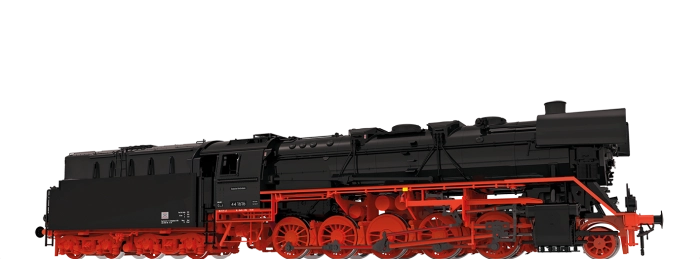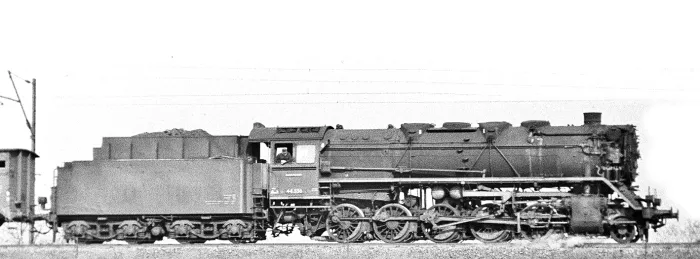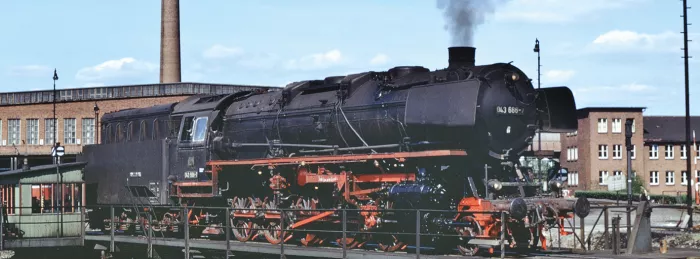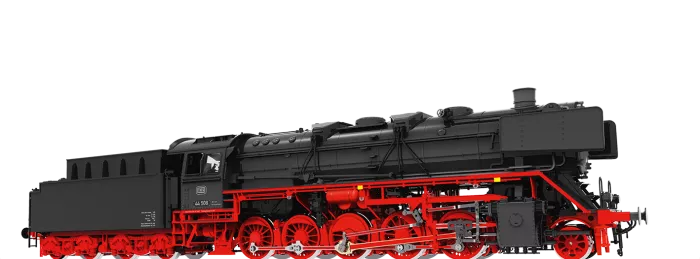
Freight Locomotive BR 44 DR
Road no.: 44 0101-4; Bw Sangerhausen
Model details
- Heavy oil tank
- Cloed tender bulkhead
- Boiler, driver's cab and tender made of high-quality, impact-resistant plastic
- Perforated underframe and spoked wheels in die-cast zinc
- Standard shaft rear with link guide
- Sound decoder, either built in or as a retrofit option
- Smoke generator can be retrofitted
- Close coupling between locomotive and tender
- Drive in the tender
- Single axle bearing
- Perfectly replicated back boilerplate
- Metal drive and coupling rods
- Illuminated driver's cab (Version Digital EXTRA)
- Engine lighting (Version Digital EXTRA)
- Fire flickering (Version Digital EXTRA)
Overview of technical functions
| Light change | ||
| Fire flickering | ||
| Driver cabin lighting | ||
| Digital interface | PluX22 | PluX22 |
| Decoder | ||
| Sound |
1) function only available in digital mode
Info about the original
Like the German Federal Railway (Bundesbahn or BR) in the West, the East German National Railway (Deutsche Reichsbahn or DR) was also continuously striving to improve its fleet and increase its efficiency. By the early 1950s, a significant number of BR 44 locomotives had been converted from coal to coal dust firing, enabling a 10% increase in boiler output. Even greater performance gains were realised with the subsequent transition to oil firing. The National Railway conducted initial trials of oil firing on locomotive 44 195. After being converted to oil firing, this locomotive was dispatched to the testing facility in Halle, where it underwent thorough operational assessments. Following favourable test results, the National Railway authorised the conversion of an additional 96 locomotives to oil firing at the Meiningen maintenance depot between 1963 and 1967. The 2‘2‘ T34 oil tenders were equipped with the distinctive square 13.5 m³ heavy oil tank and a closed rear bulkhead to the cab. The latter improved the working conditions on the engineer's platforms, especially during reverse travel. Since the DR only filled its oil tanks from the top, there was no need for an external riser pipe to bunker the fuel. The new firing system made the 44 Oil virtually irreplaceable within the DR’s fleet. Of the 102 BR 44 locomotives still in operational condition in 1974, 94 were oil-fired and mainly distributed among the Eberswalde, Nordhausen, Saalfeld, Sangerhausen and Wittenberge railway depots. The BR 44 series remained in service until late 1981, when it was retired rather abruptly as a result of the second oil crisis.






